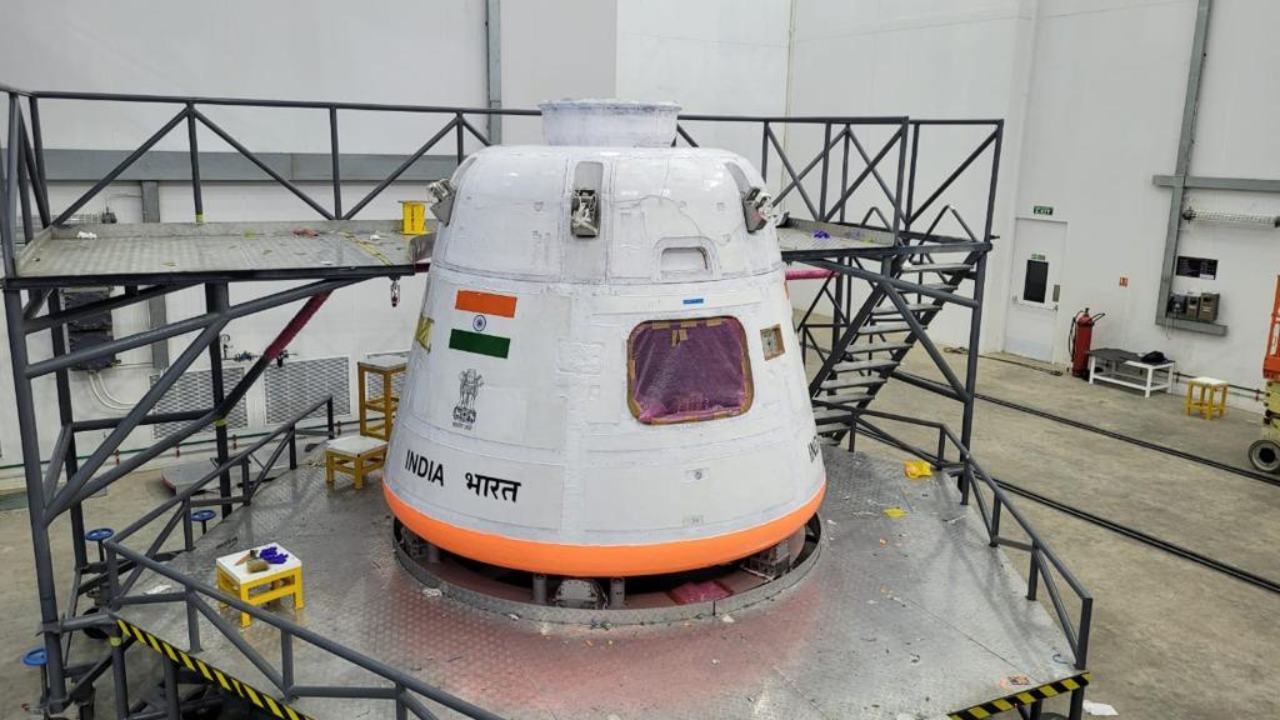It may be mentioned here that some Hyderabad manufacturers have also provided ISRO with the crew modules which were manufactured in the city.
ISRO explained that the Crew Module (CM) is where the astronauts are contained in a pressurized earthlike atmospheric condition during the Gaganyaan mission.
“The CM for the Gaganyaan mission is in different stages of development. For the Test Vehicle Abort mission-1 (TV-D1), the CM is an unpressurised version that has completed its integration and testing and is ready to be shipped to the launch complex,” ISRO said.
This unpressurised CM version has to have an overall size and mass of actual Gaganyaan CM. It houses all the systems for the deceleration and recovery. With its complete set of parachutes, recovery aids actuation systems and pyros.
The avionics systems in CM are in a dual redundant mode configuration for navigation, sequencing, telemetry, instrumentation and power. The CM in this mission is extensively instrumented to capture the flight data for evaluation of the performance of various systems. The Crew Module will be recovered after touchdown in the Bay of Bengal, using a dedicated vessel and diving team from the Indian Navy, ISRO said.
The first development flight Test Vehicle (TV-D1) is in the final stages of preparation, ISRO said. The Test Vehicle is a single-stage liquid rocket developed for this abort mission. The payloads consist of the Crew Module (CM) and Crew Escape Systems (CES) with their fast-acting solid motors, along with CM fairing (CMF) and Interface Adapters.
“This flight will simulate the abort condition during the ascent trajectory corresponding to a Mach number of 1.2 encountered in the Gaganyaan mission. CES with CM will be separated from the Test Vehicle at an altitude of about 17 km. Subsequently, the abort sequence will be executed autonomously commencing with the separation of CES and deployment of the series of parachutes, finally culminating in the safe touchdown of CM in the sea, about 10 km from the coast of Sriharikota,” ISRO said.
ISRO said the Crew Module after integration underwent various electrical testing, at ISRO’s facility in Bengaluru, including an acoustic test and was dispatched to SDSC-SHAR on August 13.
At SDSC, it will undergo vibration tests and pre-integration with the Crew Escape System, before final integration to the Test Vehicle at the Launch Pad. This Test Vehicle mission with this CMis a significant milestone for the overall Gaganyaan programas a near-complete system is integrated for a flight test. “The success of this test flight will set the stage for the remaining qualification tests and unmanned missions, leading to the first Gaganyaan mission with Indian Astronauts,” ISRO said.
ISRO’s plan is to send three astronauts into space in Gangayaan. “Gaganyaan project envisages demonstration of human spaceflight capability by launching a crew of 3 members to an orbit of 400 km for a 3 days mission and bringing them back safely to earth, by landing in Indian sea waters,” ISRO said.


